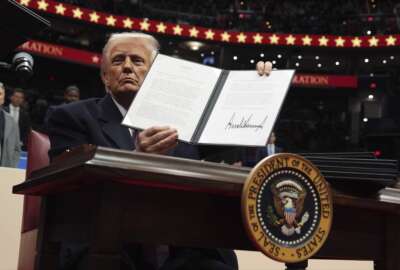Gen. Casey: family programs won’t fall to budget axe
Army leaders promised to leave family support programs intact when looking for ways to lean out the service\'s massive budget.
From “Army leaders at AUSA promise not to cut family programs” by C. Todd Lopez at Army.mil:
“Army leaders promised to leave family support programs intact when looking for ways to lean out the service’s massive budget.
“During the Oct. 25 opening presentation at the 2010 Association of the United States Army’s Annual Meeting and Exposition in Washington, D.C., [Army Secretary John] McHugh discussed the Army’s challenge of operating in a constrained budget environment as well as efforts to modernize the Army. He and Chief of Staff of the Army George W. Casey Jr. went into more detail during a press conference immediately following that ceremony.
“In regard to a challenge by Secretary of Defense Robert Gates to the military services to find ways to trim some $100 billion from the defense budget over the next five years, the Army’s two senior leaders said they won’t look to family support programs — which they say are important to supporting the all-volunteer force — but will instead look to things like restructuring commands and doing ‘portfolio reviews’ of Army capabilities.
“The secretary said there are examples of changes in the institutional Army in the past, including a reorganization of the War Department by Gen. George C. Marshall, and, after the Vietnam War, Operation Steadfast, which reorganized the Army and built an all-volunteer force.
“The Army’s chief of staff also discussed the Army’s effort to restore balance to the force, which it has been working on since 2007.
“He said as a result of the increased growth the Army completed in 2009 and a temporary end-strength increase of 22,000 by the secretary of defense in July 2009, units are home for 15 to 18 months now, and the units that are deploying toward the end of this year will end up in the 18 to 24-month range.
“The general also touched on other Army efforts, including modular conversions. He said the service has converted about 290 of the 300 brigades to modular designs. Also, he mentioned an effort to move Soldiers out of Cold War-era career fields and into specialties more relevant to today’s conflicts. He said so far some 124,000 Soldiers have been converted, and by this time next year that number will be 150,000. That move, he said is ‘significantly increasing our ability to do the 21st-century tasks.’
“Casey also said in the Army’s second decade of combat it faces several challenges, including maintaining a combat edge, reconstituting the force and building resilience.”
Click “play” to watch the entire event:
Copyright © 2025 Federal News Network. All rights reserved. This website is not intended for users located within the European Economic Area.





